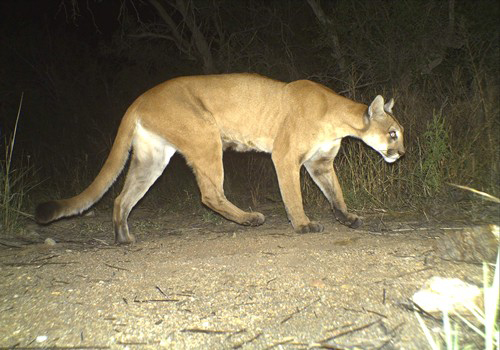The cougar (Puma concolor) is a large cat native to the Americas. Its range spans from the Canadian Yukon to the southern Andes in South America and is the most widespread of any large wild terrestrial mammal in the Western Hemisphere. It is an adaptable, generalist species, occurring in most American habitat types. This wide range has brought it many common names, including puma, mountain lion, catamount and panther (for the Florida sub-population). It is the second-largest cat in the New World, after the jaguar (Panthera onca). Secretive and largely solitary by nature, the cougar is properly considered both nocturnal and crepuscular, although daytime sightings do occur. Despite its size, the cougar is more closely related to smaller felines, including the domestic cat (Felis catus) than to any species of the subfamily Pantherinae.

The cougar is an ambush predator that pursues a wide variety of prey. Primary food sources are ungulates, particularly deer, but it also hunts smaller prey such as rodents. It prefers habitats with dense underbrush and rocky areas for stalking, but also lives in open areas.

Cougars are territorial and live at low population densities. Individual home ranges depend on terrain, vegetation and abundance of prey. While large, it is not always the apex predator in its range, yielding prey it has killed to American black bears, grizzly bears and packs of wolves. It is reclusive and mostly avoids people. Fatal attacks on humans are rare, but increased in North America as more people entered cougar habitat and built farms.

Mountain lions are easily distinguished from Arizona’s other wild cats—the bobcat, ocelot, and jaguar. Bobcats and ocelots are much smaller than mountain lions. Bobcats have a short, “bobbed” tail and pointed ears with tufts while ocelots have heavily spotted pelts and long, ringed tails. Jaguars are larger and heavily spotted with rosette patterns.

